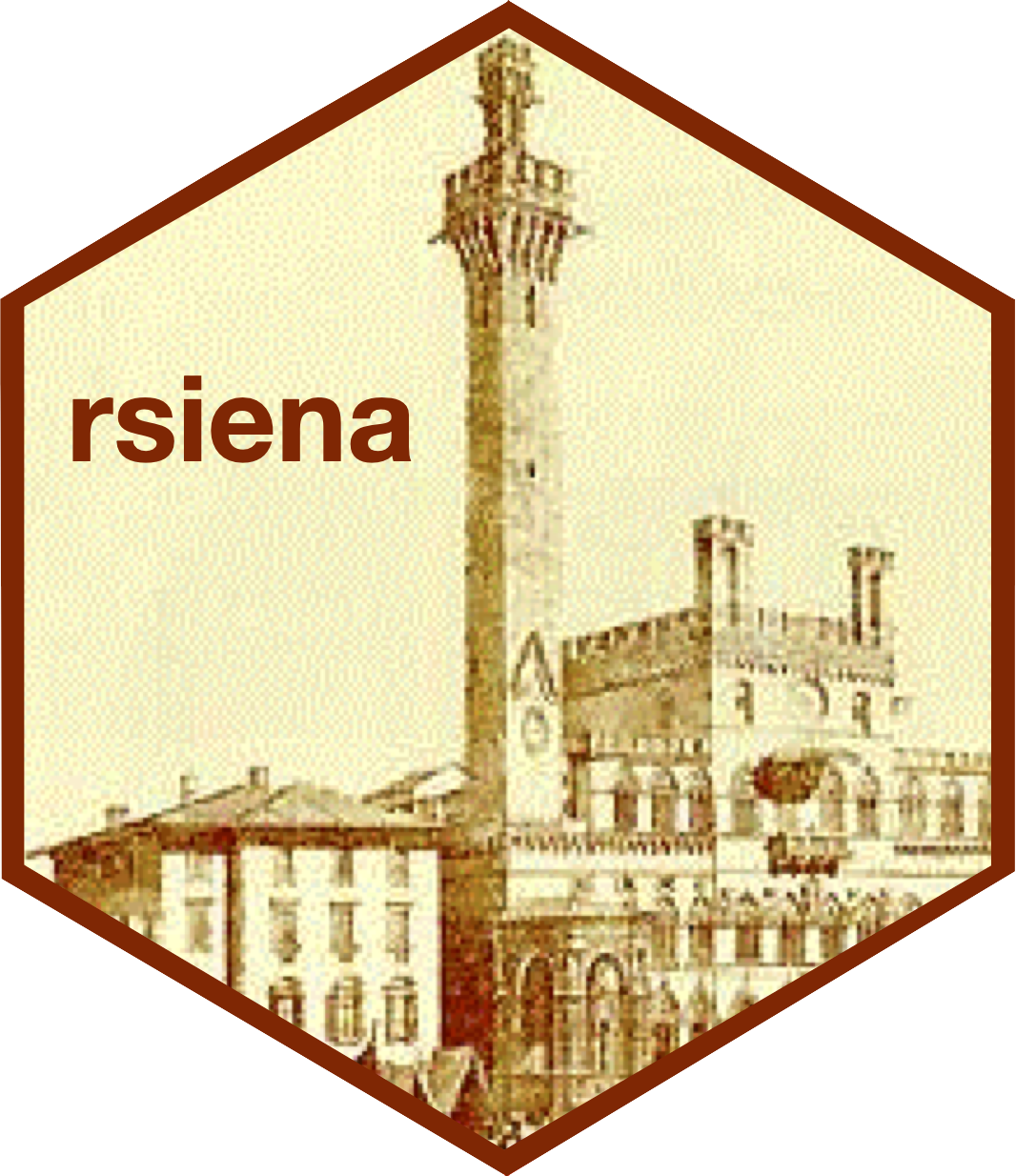Home
SIENA is a program for the statistical analysis of network data, with the focus on social networks. Networks here are understood as entire (complete) networks, not as personal (egocentered) networks: it is assumed that a set of nodes (social actors) is given, and all ties (links) between these nodes are known - except perhaps for a moderate amount of missing data. SIENA is designed for analyzing various types of data as dependent variables:
This refers to repeated measures of networks on a given node set (although it is allowed that there are some changes in the node set). Models can be specified with actor-oriented as well as tie-oriented dynamics; but mainly the former.
This is like longitudinal network data, but in addition there are one or more changing nodal variables that are also treated as dependent variables, and referred to as behavior. The network will influence the dynamics of the behavior, and the behavior will influence the dynamics of the network. In other words, this is about the co-evolution of networks and behavior.
'Cross-sectional' means that only one observation is available. This method uses exponential random graph models ('ERGMs'), also called p* models. The ERG model is implemented in SIENA version 3, but not any more in version 4 (RSiena). It is still available, but no longer maintained.
The name SIENA stands for Simulation Investigation for Empirical Network Analysis. The method is implemented in the R package RSiena, and its sister package multiSiena. The main approach used by SIENA for modeling dynamics of network (or of networks and behavior) is an actor-oriented model, in which it is assumed that the social actors who are represented by the nodes in the network play a crucial role in changing their ties to other actors; in the case of associated behavior dynamics, also in changing their behavior. All of these models are Markov chain models; such models are more applicable to relations and behavioral variables that can be regarded as states than to relations or behavior that are more adequately regarded as non-enduring events.
The statistical analysis in SIENA is done on the basis of computer simulation of the network. This can be time consuming. In view of the detailed approach to network dynamics and the required computing resources, the method is applicable in principle to networks on approximately 10 to 1,000 nodes. For multiple replications of smaller networks (from 4 or 5 up to 40 or 60 nodes), a multilevel option sienaBayes() is available in multiSiena. The latter package is available from the Siena downloads site.
A scientific summary is available through the link to the right of this page. The methods implemented in SIENA are described in the papers given in the webpage with literature. Many further articles with applications are given in the webpage with further applications. The program is obtained as a package within R and the extensive manual is downloadable here.
There exists a User Group for Siena and StOCNET to exchange information and seek technical advice on using the Siena and StOCNET software to analyze network data. The address is https://groups.io/g/RSiena.
SIENA version 4, also called RSiena, is a contributed package for the R statistical system, see https://cran.r-project.org/package=RSiena. It can be installed in the regular way from CRAN, but often a more recent version is obtainable as indicated at the downloads page. The incorporation of RSiena in R makes available all other possibilities offered by R; in particular, to execute R in a Mac, Unix/Linux, or Solaris environment. Further information on RSiena is on the Siena website.
RSiena was the recipient of the 2017 INSNA William D Richards Award. This is a "lifetime achievement award" for "publically available social network analysis software without which it would be impossible to study social networks".
Known bugs and new papers are given at the Siena news page.
The SIENA program is part of an ongoing research effort. The research team is composed of Tom Snijders, Christian Steglich, Johan Koskinen, Nynke Niezink, Viviana Amati, Christoph Stadtfeld, Robert Krause, and James Hollway, with earlier contributions from Ruth Ripley, Krists Boitmanis, Felix Schönenberger, Charlotte Greenan, Josh Lospinoso, Paulina Preciado, Michael Schweinberger, Mark Huisman, and Marijtje van Duijn. Courses and a user group are mentioned at the activities webpage.
-
Background
-
Downloads
-
Teaching
-
Projects
